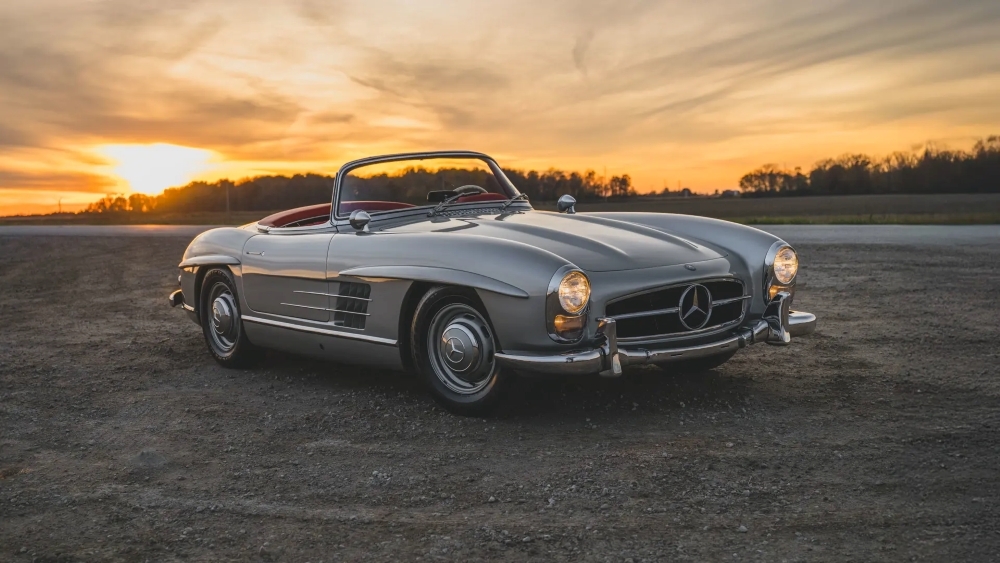Sotheby’s Makes History: A Landmark Evening of Modern Art History in New York
November 2025 has been a milestone month in the history of Sotheby’s New York. One of the world’s oldest auction houses, this storied brand has recently relocated to the newly restored Breuer Building, previously home to the Whitney Museum of Art – on the prestigious Museum Mile in Manhattan’s Upper East Side.
But that was just the start of things to come in what has been a solid fourth quarter. In a single evening, the company achieved its highest auction total to date, setting a new record with an extraordinary $706 million in sales. The event witnessed a cascade of broken records, including the second-highest art sale ever recorded, and saw exceptional works from some of the most celebrated names in modern and contemporary art find new owners. Continue reading for a full overview of this remarkable moment in Sotheby’s New York’s history.
.jpg?width=385&height=533&name=download%20(5).jpg)
A Collector Who Shaped Modern Art History
At the heart of the record-setting auction was an exceptional 54-piece collection from the late Leonard A. Lauder – heir to the Estée Lauder Companies cosmetics empire. The sale was divided into two sessions, with 24 works presented on Tuesday, 18 November, and the remaining 30 offered the following morning, to much interest. Lauder, a dedicated collector throughout his lifetime, built an esteemed legacy by acquiring significant works from artistic giants including Klimt, Munch and Matisse – a passion he continued to pursue until his passing in June 2025.
Representing a rare and exceptional assembly of major 20th-century artworks, the Leonard A. Lauder Collection stood as a true tribute to modern art. It offered a remarkable showcase of creativity, innovation and artistic influence, capturing the spirit and lasting contribution of some of the era’s most pivotal figures.
After Lauder’s passing, Sotheby’s was selected to oversee the auction of his collection – a fitting decision reflecting his close association with The Whitney Museum and the Breuer Building itself, where he long served as a trustee.
Lauder’s passion for art began at an early age – starting at just six years old with a collection of postcards, several of which were exhibited at the Museum of Fine Arts in Boston in 2012. Over the decades, his collection grew to extraordinary proportions, eventually enabling him to pledge his prized Cubist works to the Metropolitan Museum of Art in New York City – a donation valued at more than $1 billion.
The Sotheby’s auction provided a rare opportunity to view the scope of Lauder’s remarkable collection, which included works by Gustav Klimt, Henri Matisse and the famed Spanish Cubist Pablo Picasso. Notable pieces by Dutch master Vincent van Gogh and Norwegian expressionist Edvard Munch – best known for The Scream – were also featured. However, the undisputed highlight of the evening was the full-length portrait of a young Elisabeth Lederer, daughter of Klimt’s most significant patrons, meticulously created over the course of three years in the mid-1910s.
Redefining the Limits of Modern Art Sales
The landmark November auction marked Sotheby’s highest-ever total for a single evening, achieving an astonishing $706 million in sales. A major contributor to the evening’s staggering total was Gustav Klimt’s Portrait of Elisabeth Lederer (1914–16), which achieved an extraordinary $236.4 million following a 19-minute bidding duel – making it the most expensive work ever sold by Sotheby’s. This sale surpassed Klimt’s previous record of $183.8 million, paid in 2013 by Russian businessman Dmitry Rybolovlev for Wasserschlangen II, and now ranks as the second-highest price ever paid for a work of art, trailing only Leonardo da Vinci’s Salvator Mundi.
Bidding had opened at $130 million, with expectations around $150 million, yet the final price underscored Klimt’s exceptional status in the top-tier art market, with the winning bid ultimately reaching a $205 million hammer price, before additional fees.
The painting carries a remarkable and complex history. During World War II, it was among a collection seized by Nazi officials in Vienna. In what turned out to be something of a blessing in disguise, the work narrowly escaped destruction by fire, having been separated from other paintings that were lost – a fate influenced by its depiction of a Jewish subject.
Chairman of Sotheby’s Europe, Helena Newman, was quoted as saying: “To see Gustav Klimt’s exquisite portrait of Elisabeth Lederer set a new auction record for the artist is thrilling in itself; to see it become the most valuable work ever sold at Sotheby’s is nothing short of sensational. Klimt is one of those rare artists whose magic is as powerful as it is universal.”
Additional Masterpieces That Defined the Evening
The evening also showcased an impressive selection of other high-value works, all 24 pieces finding new owners. Among them were two additional Klimt paintings, pushing the total for the Austrian master’s works to a remarkable $384.7 million. His 1908 painting Blumenwiese (Blooming Meadow) sold for $86 million, while Waldhag bei Unterach am Attersee (Forest Slope in Unterach on the Attersee) fetched $68.3 million, underscoring the Viennese icons' continued importance to the market.
In an evening that celebrated some of the most esteemed figures in the art world, Edvard Munch’s Sankthannatt commanded $35.1 million following a seven-minute contest among three bidders. Meanwhile, Agnes Martin’s The Garden sold for $17.6 million to private dealer Philippe Ségalot, who triumphed over two other competitors in a 10-minute bidding battle.
A drawing by one of modern art’s most iconic figures, Vincent van Gogh, Le Semeur dans un champ de blé au soleil couchant (1888), achieved $9.43 million, while two bronze sculptures by Henri Matisse each sold for $16.7 million. Other highlights from the evening – outside the Lauder collection – included Maurizio Cattelan’s infamous gold toilet, which changed hands for $12.1 million.
The extraordinary results offered a positive turn for a market that has faced a challenging period in recent years, influenced by geopolitical uncertainty and a limited supply of premier works. Yet this landmark $706 million auction suggests that the high-end art market is regaining momentum, hinting at a brighter outlook on the horizon.



